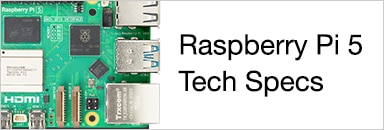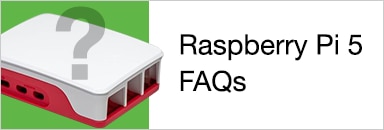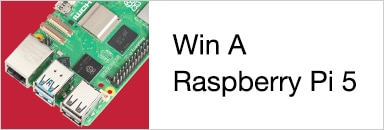|
Say you want to know how much electricity an appliance like an air purifier is consuming?
You can hook it up to the nifty Kill-A-Watt power meter (aka KaW). The KaW will keep track of and display the killowatt-hours, or kWh, used by the plugged in device.
However, the total will be reset anytime the KaW is unplugged and loses power. Limor Fried (aka ladyada) recognized this shortcoming and created the clever Tweet-A-Watt project back in 2009. She modded the KaW into a wireless data logger by soldering a XBee wireless module to the KaW's op-amp chip:
The XBee's built-in ADC reads the power sensor signals inside the KaW and transmits it to a receiver XBee module connected to a computer via USB. This diagram by ladyada gives a good sense of the architecture:
(source: http://www.ladyada.net/make/tweetawatt/)
The Tweet-A-Watt (TaW) is an awesome project, but I felt it's requirement to have a computer receive the data was cumbersome and power hungry. Thankfully, we now live in an world of powerful, tiny & cheap single board computers (SBCs) like the Raspberry Pi . I decided to use the Pi in place of a traditional computer. I also used the Adafruit LCD Pi Plate to display the power usage data. and the Adafruit Pi Box enclosure to protect the Pi (which has a convenient "convertible" mode to accommodate the LCD Pi Plate on top):
The receiver XBee module connects to the Pi via a FTDI USB-to-serial cable :
Ladyada used Google AppEngine for graphing the TaW data, but I decided to take advantage of the newer Cosm graphing service (formerly named Pachube). Here is a screenshot of my RaspiWatt Cosm feed showing Watts, kWh, and USD$ (based on the cost of a kWh for my power company):
Here is the list of parts I used if you are interested in building your own "RaspiWatt":
| SKU | Qty | Name | Purpose |
|---|---|---|---|
53W5739 | 1 | Adafruit Tweet-A-Watt starter pack | Includes 2 XBee radio modules and adapter boards; components to mod the XBee transmitter; FTDI USB-to-serial cable |
07P6545 | 1 | Kill-A-Watt P4400 power meter | Power meter which the XBee transmitter taps into |
| 44W3465 | 1 | Adafruit Pi Box enclosure | Protects Pi and has 'convertible' mode to accommodate the LCD Pi Plate |
| 52W9085 | 1 | Adafruit RGB LCD Pi Plate | Displays current power usage; intend to use it's buttons to create simple UI |
53W5726 | 1 | to replace the header that comes with the above Plate, it allows the Cobbler to be used | |
| 44W3497 | 1 | to connect additional sensors to log to Cosm like temperature, humidity, etc | |
56T0250 | 1 | Full-size breadboard | to construct additional sensor circuits |
| 43W5302 | 1 | Raspberry Pi Model B | replaces the TaW "traditional" computer |
You can Add to Cart on Newark element14 all of the above (excluding the Raspberry Pi Model B).
My Pi is currently running a Python program named wattcher_cosm.py which is based on ladyada's original TaW wattcher.py program. bonnie555 has been a big help in developing it for the RaspiWatt project, and it incorporates code from Adafruit's Cosm tutorial and their LCD Pi Plate tutorial. In future posts, I'll describe in more detail how I assembled the hardware and provide instructions for installing the software on the Pi.
Cheers,
Drew
| Product Name* | Description | Supplier | ||
| Raspberry Pi Model B | Raspberry Pi model B | Raspberry Pi |
| |
| Optical mouse | Basic USB optical mouse | IONE / Pro Signal |
| |
| Raspberry Pi Power Supply | 120-240v to 5V power supply with micro USB connector | Raspberry Pi |
| |
| Keyboard | Basic USB keyboard | Gear Head / A4 Tech |
| |
| Pre-programmed 4GB SD card | 4GB Class 4 SD card preloaded with Debian 6 Linux | Samsung |
| |
| Adafruit Tweet-A-Watt starter pack | Includes 2 XBee radio modules and adapter boards, components to mod the XBee transmitter and an FTDI USB-to-serial cable | Adafruit |
| |
| Kill-A-Watt P4400 power meter | Power meter which the XBee transmitter taps into | P3 International |
| |
| Adafruit Pi Box Enclosure | Protects Pi and has 'convertible' mode to accommodate the LCD Pi Plate | Adafruit |
| |
| Adafruit RGB LCD Pi Plate | Displays current power usage; Buttons can be used to create simple UI | Adafruit |
| |
| Adafruit Stacking Header | Replaces the header that comes with the Pi Plate, and allows the Pi Cobbler to be used | Adafruit |
| |
| Adafruit Pi Cobbler | Allows for easy connection to the Pi's GPIO pins | Adafruit |
| |
| Full-Size Breadboard | Allows for easy construction of additional sensor circuits | Twin Industries |
|
*Products and resources are listed to help members build their own Pi Projects. For substitutions of any parts, please login to post a question to the original author.



















Top Comments